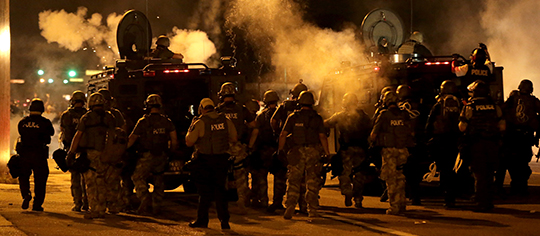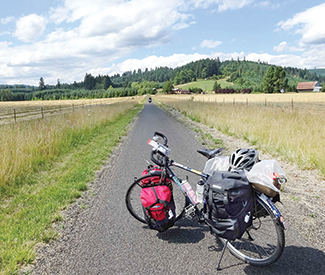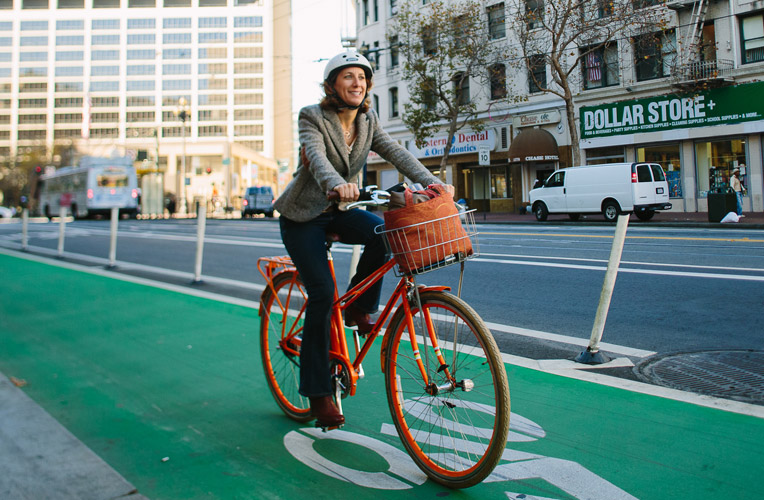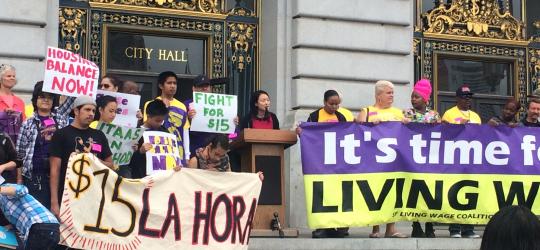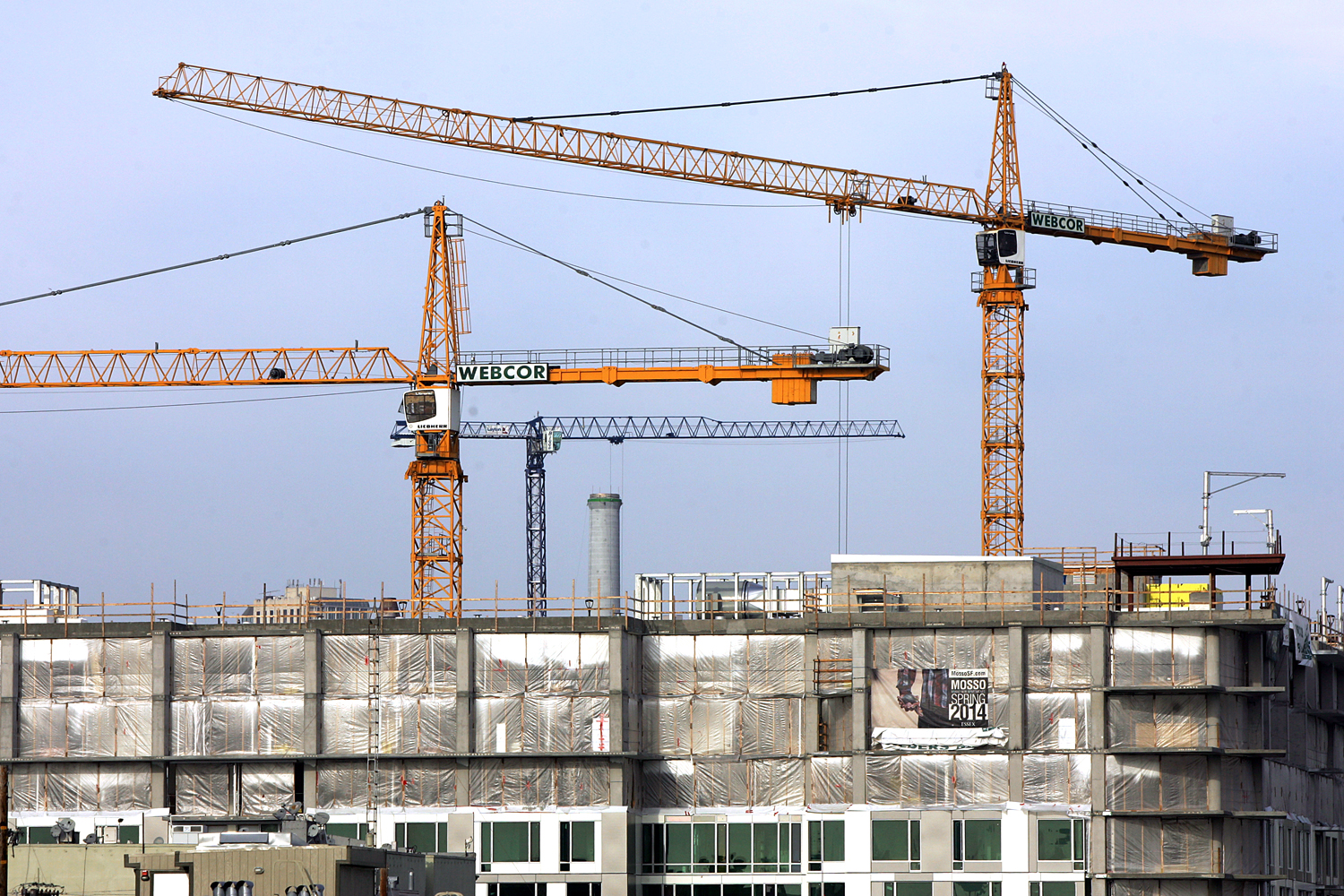A tear gas canister explodes as citizens flee from the gun-toting warriors, safely guarded behind their armored vehicles. Dressed in patterned camo and body armor, they form a skirmish line as they fire projectiles into the crowd. Flash bang explosions echo down the city’s streets.
Such clashes between police and protesters have been common in Ferguson, Mo., in the past few weeks since the death of Michael Brown, an unarmed black teenager killed by a police officer. But it’s also a scene familiar to anyone from Occupy Oakland, where Iraq veteran Scott Olsen suffered permanent brain damage after police shot a less-than-lethal weapon into his head, or similar standoffs in other cities.
 As the country watched Ferguson police mobilize against its citizens while donning military fatigues and body armor and driving in armored vehicles, many began drawing comparisons to soldiers in Iraq or Afghanistan — indeed, viral photos featuring side-by-side comparisons made it difficult to distinguish peace officers from wartime soldiers.
As the country watched Ferguson police mobilize against its citizens while donning military fatigues and body armor and driving in armored vehicles, many began drawing comparisons to soldiers in Iraq or Afghanistan — indeed, viral photos featuring side-by-side comparisons made it difficult to distinguish peace officers from wartime soldiers.
So how did law enforcement officers in police departments across the country come to resemble the military? And what impact is that escalation of armaments having on otherwise peaceful demonstrations? Some experts say the militarization of police actually encourages violence.
Since the ’90s, the federal Department of Defense has served as a gun-running Santa Claus for the country’s local police departments. Military surplus left over from wars in the Middle East are now hand-me-downs for local police across the country, including here in the Bay Area.
A grenade launcher, armored command vehicles, camera-mounted SWAT robots, mounted helicopter weapons, and military grade body armor — these are just some of the weapons and equipment obtained by San Francisco law enforcement agencies since the ’90s. They come from two main sources: the Department of Defense Excess Property Program, also known as the 1033 loan program, and a multitude of federal grants used to purchase military equipment and vehicles.
A recent report from the American Civil Liberties Union, “The War Comes Home: The Excessive Militarization of American Policing,” slammed the practice of arming local police with military gear. ACLU spokesperson Will Matthews told us the problem is stark in the Bay Area.
“There was no more profound example of this than [the response to] Occupy,” he told the Guardian. He said that military gear “serves usually only to escalate tensions, where the real goal of police is to de-escalate tension.”
The ACLU, National Lawyers Guild, and others are calling for less provocative weaponry in response to peaceful demonstrations, as well as more data to track the activities of SWAT teams that regularly use weaponry from the military.
The call for change comes as a growing body of research shows the cycle of police violence often begins not with a raised baton, but with the military-style armor and vehicles that police confront their communities with.
PREPARING FOR BATTLE
What motivation does the federal government have to arm local police? Ex-Los Angeles Police Department Deputy Chief Stephen Downing told the Guardian, “I put this at the feet of the drug war.”
The initial round of funding in the ’90s was spurred by the federal government’s so-called War on Drugs, he said, and the argument that police needed weaponry to match well-armed gangs trafficking in narcotics. That justification was referenced in the ACLU’s report.
After 9/11, the desire to protect against unknown terrorist threats also spurred the militarization of police, providing a rationale for the change, whether or not it was ever justified. But a problem arises when local police start to use the tactics and gear the military uses, Downing told us.
When the LAPD officials first formed military-like SWAT teams, he said, “they always kept uppermost in their mind the police mission versus the military mission. The military has an enemy. A police officer, who is a peace officer, has no enemies.”
“The military aims to kill,” he said, “and the police officer aims to preserve life.”
And when police departments have lots of cool new toys, there is a tendency to want to use them.
When we contacted the SFPD for this story, spokesperson Albie Esparza told us, “Chief [Greg Suhr] will be the only one to speak in regards to this. He is not available for the next week or two. You may try afterwards.”
“CRAIGSLIST OF MILITARY EQUIPMENT”
Local law enforcement agencies looking to gear up have two ways to do it: One is free and the other is low-cost. The first of those methods has been heavily covered by national news outlets following the Ferguson protests: the Department of Defense’s 1033 loan program.
The program permanently loans gear from the federal government, with strings attached. For instance, local police can’t resell any weapons they’re given.
To get the gear, first an agency must apply for it through the national Defense Logistics Agency in Fort Belvoir, Va. In California, the Governor’s Office of Emergency Services is the go-between when local police file grant applications to the DLA.
The bar to apply is low. A New Hampshire law enforcement agency applied for an armored vehicle by citing that community’s Pumpkin Festival as a possible terrorism target, according to the ACLU’s report. But the report shows such gear is more likely to be used against protestors or drug dealers than festival-targeting terrorists.
“It’s like the Craigslist of military equipment, only the people getting this stuff are law enforcement agencies,” Kelly Huston, a spokesperson of OEMS, told the Guardian. “They don’t have to pay for this equipment, they just have to come get it.”
Troublingly, where and why the gear goes to local law enforcement is not tracked in a database at the state level. The Guardian made a public records requests of the SFPD and the OEMS, which have yet to be fulfilled. Huston told us the OEMS is slammed with records requests for this information.
“The majority of the documents we have are paper in boxes,” Huston told us, describing the agency’s problem with a rapid response. “This is not an automated system.”
The Guardian obtained federal grant data through 2011 from the OEMS, but with a caveat: Some of the grants only describe San Francisco County, and not the specific agency that requested equipment.
Some data of police gear requested under the 1033 loan program up to 2011 is available thanks to records requests from California Watch. The New York Times obtained more recent 1033 loan requests for the entire country, but it does not delineate specific agencies, only states.
Available data shows equipment requested by local law enforcement, which gravitates from the benign to the frightening.
TOYS FOR COPS
An Armament Subsystem is one of the first weapons listed in the 1033 data, ordered by the SFPD in 1996. This can describe mounted machine guns for helicopters (though the SFPD informed us it has since disbanded its aero-unit). From 1995 to 1997, the SFPD ordered over 100 sets of fragmentation body armor valued at $45,000, all obtained for free. In 1996, the SFPD also ordered one grenade launcher, valued at $2,007.
Why would the SFPD need a grenade launcher in an urban setting? Chief Suhr wouldn’t answer that question, but Downing told us it was troubling.
“It’s a pretty serious piece of military hardware,” he said. “I’ll tell you a tiny, quick story. One of the first big deployments of SWAT (in Los Angeles) was the Black Panthers in the ’60s. They were holed up in a building, well armed and we knew they had a lot of weapons in there,” he said. “They barricaded the place with sandbags. Several people were wounded in the shooting, as I recall. The officers with military experience said the only way we’ll breach those sandbags and doors is with a grenade launcher.”
In those days, they didn’t have a grenade launcher at the ready, and had to go through a maze of official channels to get one.
“They had to go through the Governor’s Office to the Pentagon, and then to Camp Pendleton to get the grenade launcher,” Downing told us. “[The acting LAPD chief] said at the time, ‘Let’s go ahead and ask for it.’ It was a tough decision, because it was using military equipment against our citizens.”
But the chief never had to use the grenade launcher, Downing said. “They resolved the situation before needing it, and we said ‘thank god.'”
The grenade launcher was the most extreme of the equipment procured by local law enforcement, but there were also helicopter parts, gun sights, and multitudes of armored vehicles, like those seen in Ferguson.
By contrast, the grants programs are harder to track specifically to the SFPD, but instead encompass funds given to the San Francisco Municipal Transportation Agency, the Sheriff’s Department, and even some schools. That’s because the grants cover not only allow the purchase of military surplus vehicles and riot gear, but also chemical protective suits and disaster-related supplies.
But much of the requested gear and training has more to do with active police work than emergency response.
San Francisco County agencies used federal loans to purchase $113,000 “command vehicles” (which are often armored). In 2010, the SFPD purchased a $5,000 SWAT robot (which often comes equipped with cameras and a remote control), as well as $15,000 in Battle Dress Uniforms, and $48,000 for a Mobile Communications Command Vehicle.
In 2008, the SFPD ordered a Bearcat Military Counterattack Vehicle for $306,000.
The Lenco website, which manufactures Bearcats, says it “may also be equipped with our optional Mechanical Rotating Turret with Cupola (Tub) and Weapon Ready Mounting System, suitable for the M60, 240B and Mark 19 weapons system.”
Its essentially an armored Humvee that can be mounted with rotating gun turrets.

Department of Homeland Security grants were used to purchase Type 2 Mobile Field Training, which Department of Homeland Security documentation describes as involving eight grenadiers, two counter-snipers, two prisoner transportation vans, and 14 patrol vehicles.
All told, the Bay Area’s many agencies were awarded more than $386 million in federal grants between 2008 and 2011, with San Francisco netting $48 million of those rewards. Through the 1033 loan program, San Francisco obtained over $1.4 million in federal surplus gear from 1995 to 2011.
But much of that was received under the radar, and with little oversight.
“Anytime they’re going to file for this equipment, we think the police should hold a public hearing,” Matthews, the ACLU spokesperson, told us.
In San Francisco, there is a public hearing for the procurement of military weapons, at the Police Commission. But a Guardian analysis of agenda documents from the commission shows these hearings are often held after the equipment has already been ordered.
Squeezed between a “status report” and “routine administrative business,” a March 2010 agenda from the commission shows a request to “retroactively accept and expend a grant in the amount of $1,000,000.00 from the U.S. Department of Justice.”
This is not a new trend. In 2007, the Police Commission retroactively approved three separate grants totaling over $2 million in funding from the federal government through the OEMS, which was then called the Emergency Management Agency.
Police Commission President Anthony Mazzucco did not respond to the Guardian’s emails requesting an interview before our press time, but one thing is clear: The SFPD requests federal grants for military surplus, then sometimes asks the Police Commission to approve the funding after the fact.
Many are already critiquing this call to arms, saying violent gear begets violent behavior.
PROVOCATIVE GEAR
A UC Berkeley sociologist, with his small but driven team and an army of automatic computer programs, are now combing more than 8,000 news articles on the Occupy movement in search of a pattern: What causes police violence against protesters, and protester violence against police?
Nicholas Adams and his team, Deciding Force, already have a number of findings.
“The police have an incredible ability to set the tone for reactions,” Adams told us. “Showing up in riot gear drastically increases the chances of violence from protesters. The use of skirmish lines also increases chances of violence.”
Adams’s research uses what he calls a “buffet of information” provided by the Occupy movement, allowing him to study over 200 cities’ police responses to protesters. Often, as in Ferguson, protesters were met by police donned in equipment and gear resembling wartime soldiers.
Rachel Lederman is a warrior in her own right. An attorney in San Francisco litigating against police for over 20 years, and now the president of the National Lawyers Guild Bay Area chapter, she’s long waged legal war against police violence.
Lederman is quick to note that the SFPD in recent years has been much less aggressive than the Oakland Police Department, which injured her client, Scott Olsen, in an Occupy protest three years ago.
“If you compare OPD with the San Francisco Police on the other side of the bay,” she told us, “the SFPD do have some impact munitions they bring at demonstrations, but they’ve never used them.”
Much of this is due to the SFPD’s vast experience in ensuring free speech, an SFPD spokesperson told us. San Francisco is a town that knows protests, so the SFPD understands how to peacefully negotiate with different parties beforehand to ensure a minimum of hassle, hence the more peaceful reaction to Occupy San Francisco.
Conversely, in Oakland, the Occupy movement was met by a hellfire of tear gas and flash bang grenades. Protesters vomited into the sidewalk from the fumes as others bled from rubber bullet wounds.
But some protesters the Guardian talked to noted that the night SFPD officers marched on Occupy San Francisco, members of the city’s Board of Supervisors and other prominent allies stood between Occupiers and police, calling for peace. We may never know what tactics the SFPD would have used to oust the protesters without that intervention.
As Lederman pointed out, the SFPD has used reactive tactics in other protests since.
“We’ve had some problems with SFPD recently, so I’m reluctant to totally praise them,” she said, recalling a recent incident where SFPD and City College police pepper-sprayed one student protester, and allegedly broke the wrists and concussed another. Photos of this student, Otto Pippenger, show a black eye and many bruises.
In San Francisco, a city where protesting is as common as the pigeons, that is especially distressing.
“It’s an essential part of democracy for people to be able to demonstrate in the street,” Lederman said. “If police have access to tanks, and tear gas and dogs, it threatens the essential fabric of democracy.”

